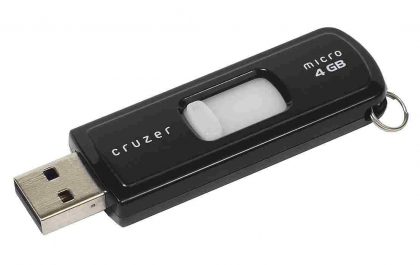Network Management. The energy sector is fully transitioning towards a more intelligent and sustainable model. A process that goes through innovation and digitization and whose main objective is to take care of the planet and people. Implementing the DSO (Distribution System Operators). Model will allow maximizing the integration of renewable energies and accelerating the decarbonization of the economy, creating value for customers.
Table of Contents
Distribution Network Operator
However. The traditional and unidirectional model (Distribution Network Operator – DNO) of energy. Distribution, from the high-voltage transport networks to the points of consumption. Is being transformed by integrating renewable energies and energy decentralization. Moreover. The operation and managing of these new resources make. Meanwhile it necessary to have a digital, intelligent and flexible network.
What Are Dso (Distribution System Operators)
Distribution System Operators (DSO) are responsible for distributing and managing energy from the generation sources to the end users who consume it. Digitization is the key to securing the DSO model, requiring investments in automation. Smart meters, real-time systems, big data and data analytics.
The DSO model uses intelligent meters that enable bidirectional reading of energy flow and real-time communication. In this way. It is probable to detect interruptions and restore supply in an automated manner, facilitating the monitoring of customers’ daily consumption through digital query platforms at their disposal.
The Advantages Of The Dso Model
The growing demand for electricity from low carbon dioxides emission technologies, such as the recharging of electric vehicles and the increase in distributed energy resources. Has driven the need to create a distribution network capable of proactively managing clients’ needs. This is where the DSO model enters the scene, among whose advantages three stand out:
However, Through the use of smart meters, it can measure and manage energy flows taking into account their bidirectionality —energy consumed and generated—in addition to the intermittence of wind and solar sources.
Moreover, It allows the massive integration of renewable energies, improving supply quality and creating customer value.
It will give customers real-time information about consumption, offering them a complete and personalized experience.
The Expansion Of The Dso Model In The Iberdrola Group
The Networks business of the Iberdrola Group has launched the following projects, among others:
- In Spain. It participates in demonstrative projects at the European level. Such as coordinates and OneNet. In which network problems are solved through the use of the flexibility of connected resources, obtaine through markets. Coordinated in the first case with the System Operator of Spain, Red Eléctrica. And with the Market Operator. OMIE, in the second.
- In the United Kingdom. An active real-time network control project is being implemented in the Dumfries and Galloway area. Allowing more than 200MW of renewable generation to connect, avoiding network congestion.
- In the United States. The massive deployment of smart meters has begun in companies in the state of New York, NYSEG and RG&E, both in the electricity and gas businesses, as well as the continuous automation of substations.
- In Spain, it participates in demonstrative projects at the European level, such as coordinates and OneNet, in which network problems are solved through the use of the flexibility of connected resources, obtained through markets. Coordinated in the first case with the System Operator of Spain, Red Eléctrica, and with the Market Operator, OMIE, in the second.
Uk and Us aboutThe Expansion Of The Dso Model In The Iberdrola Group
- In the United Kingdom. An active real-time network control project is being implemented in the Dumfries and Galloway area. Allowing more than 200MW of renewable generation to connect, avoiding network congestion.
- In the United States. The massive deployment of smart meters has begun in companies in the state of New York, NYSEG and RG&E, both in the electricity and gas businesses, as well as the continuous automation of substations.
- In Brazil. Neoenergia has selected the region made up of the cities of Atibaia. Bom Jesus dos Perdões and Nazaré Paulista, in the east of the state of São Paulo, to invest in improvements that allow it to offer an energy distribution service closer to that of a DSO. This investment includes the areas of intelligent meters, automation and telecommunications. In Brazil, Neoenergia has selected the region made up of the cities of Atibaia, Bom Jesus dos Perdões and Nazaré Paulista, in the east of the state of São Paulo, to invest in improvements that allow itThe energy sector is fully transitioning towards a more intelligent and sustainable model. A process that goes through innovation and digitization and whose main objective is to take care of the planet and people. Implementing the DSO (Distribution System Operators) model will allow maximizing the integration of renewable energies and accelerating the decarbonization of the economy, creating value for customers.However, The traditional and unidirectional model (Distribution Network Operator – DNO) of energy distribution, from the high-voltage transport networks to the points of consumption, is being transform by integrating renewable energies and energy decentralization. The operation and managing of these new resources make it necessary to have a digital, intelligent and flexible network.
What Are Dso (Distribution System Operators)
However, Distribution System Operators (DSO) are responsible for distributing and managing energy from the generation sources to the end users who consume it. Moreover, Digitization is the key to securing the DSO model, requiring investments in automation. Smart meters, real-time systems, big data and data analytics.
Moreover, The DSO model uses intelligent meters that enable bidirectional reading of energy flow and real-time communication. In this way. Moreover, It is probable to detect interruptions and restore supply in an automated manner, facilitating the monitoring of customers’ daily consumption through digital query platforms at their disposal.
The Advantages Of The Dso Model
The growing demand for electricity from low carbon dioxides emission technologies. Such as the recharging of electric vehicles and the increase in distributed energy resources. Moreover, Has driven the need to create a distribution network capable of proactively managing clients’ needs. This is where the DSO model enters the scene, among whose advantages three stand out:
However, Through the use of smart meters, it can measure and manage energy flows taking into account their bidirectionality —energy consumed and generated—in addition to the intermittence of wind and solar sources.
It allows the massive integration of renewable energies, improving supply quality and creating customer value.
Moreover, It will give customers real-time information about consumption, offering them a complete and personalized experience.
The Expansion Of The Dso Model In The Iberdrola Group
The Networks business of the Iberdrola Group has launched the following projects, among others:
to offer an energy distribution service closer to that of a DSO. This investment includes the areas of intelligent meters, automation and telecommunications.
Related posts
Featured Posts
Could a ‘Hacker’ Drive My Self-Driving Car?
Could a ‘Hacker’ Drive My Self-Driving Car? . Experts say it is challenging, although they could control some partial functions….
How to Boot a USB
How To Boot A Usb – Have you had problems with your computer and need to reinstall the operating system…


